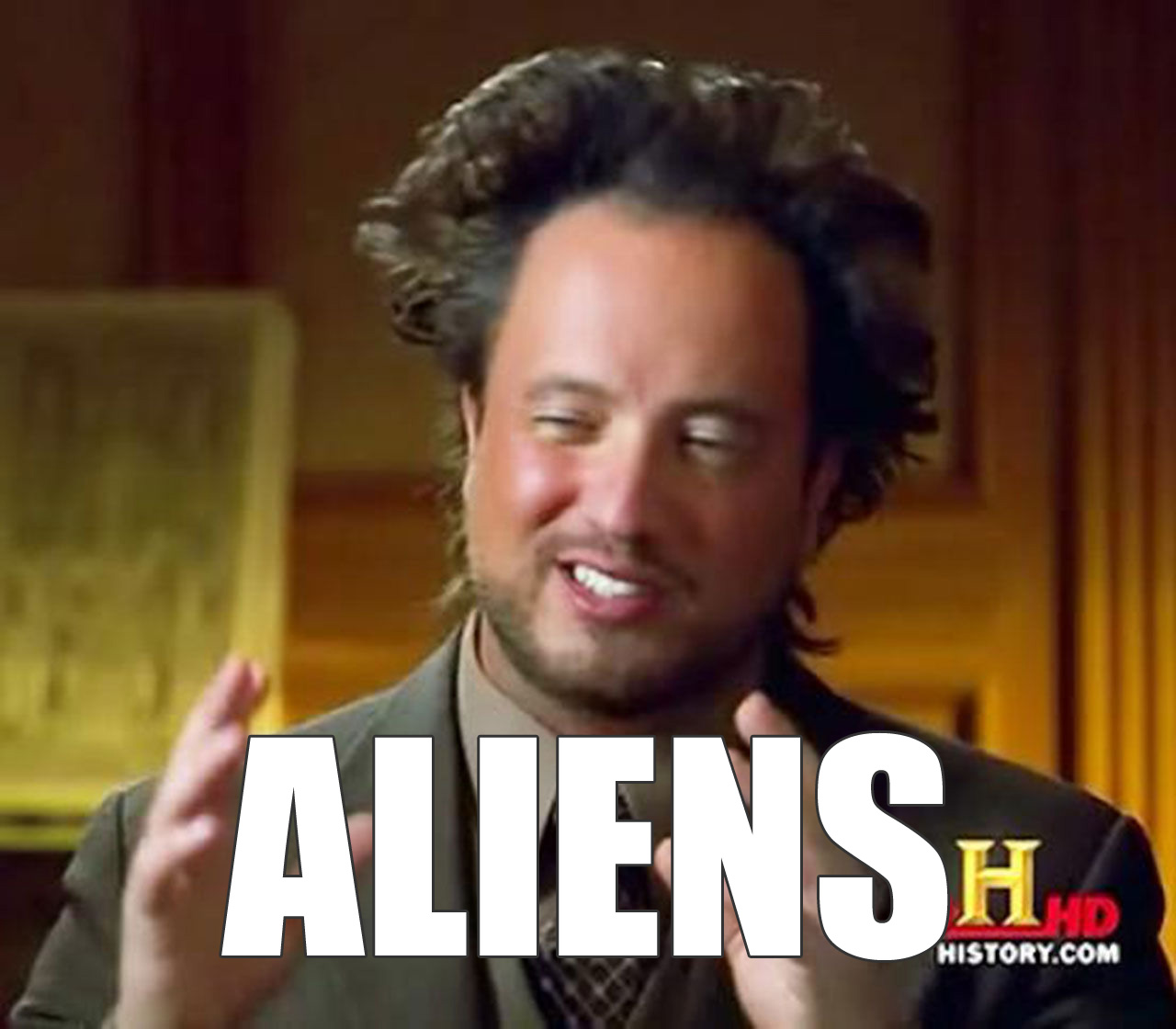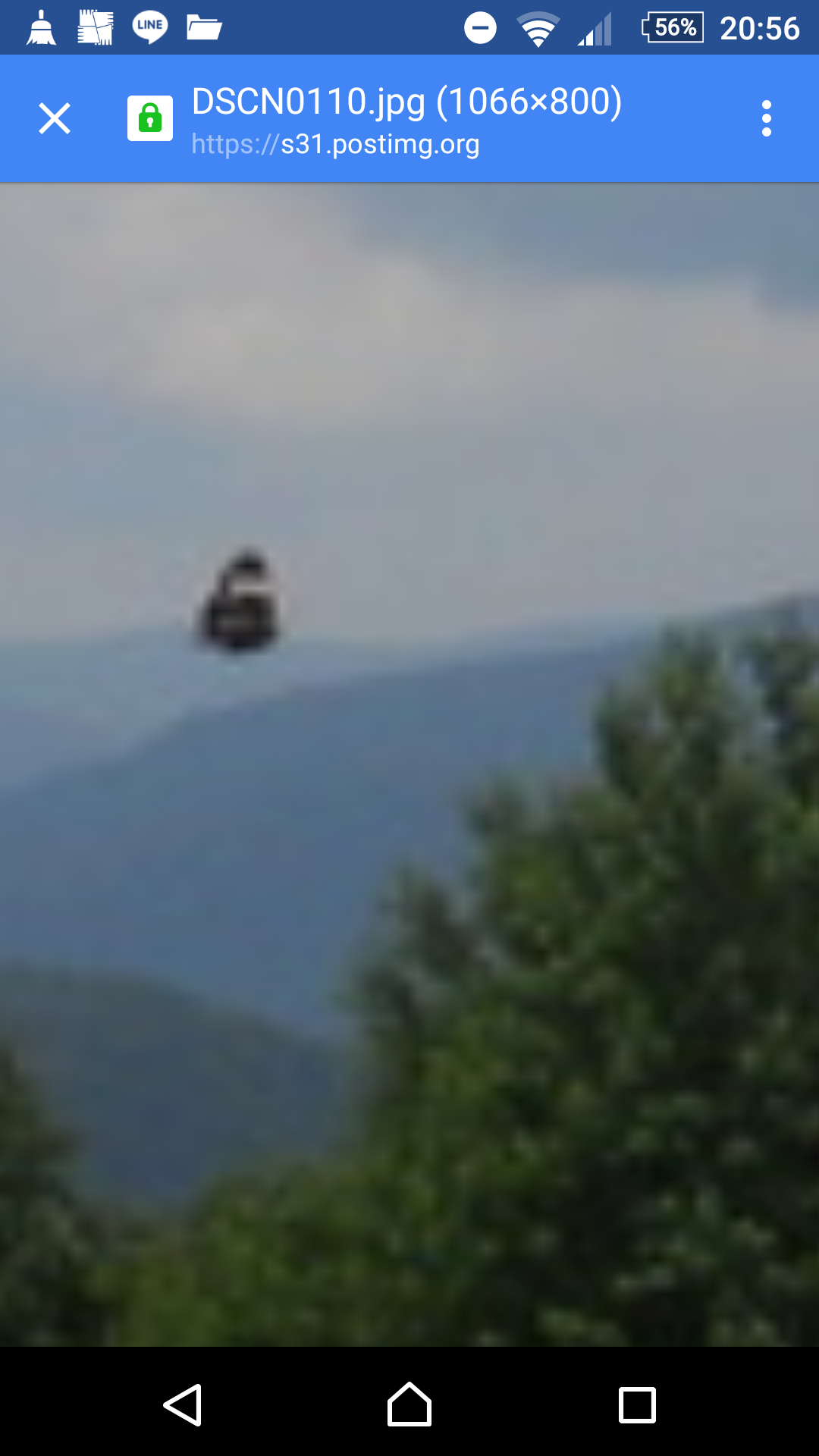It looks like you're using an Ad Blocker.
Please white-list or disable AboveTopSecret.com in your ad-blocking tool.
Thank you.
Some features of ATS will be disabled while you continue to use an ad-blocker.
share:
You guys seriously have to be taking the proverbial when you're saying it's a butterfly!
It's like a test that a psychiatrist would give you!
"say the first thing that comes into your mind when you see this picture"
"it's a lovely butterfly"
So, it must be a butterfly!
Then we have the photography expert! With the same old (enter your own chosen expletive)
"clean your lens" "it's lens Flare" (expletive)
Complete and utter (expletive)
This site used to be great when it came to UFO's, paranormal etc but now its just filled with entitled (expletive) that are so far wrapped up in their own world of (expletive) to get their head out of their (expletive) and actually open their (expletive) minds to something that's not about them!
Stop jumping on the (expletive) deny everything bandwagon and looking for how many stars can i get for my post! This isn't (expletive) Facebook or Twitter!
Back to the OP. Mate, it does look rather odd and I'm sure it'll be a talking point for you, family, friends for many years to come. Take it to an EXPERT who may clear up the image to have a good look.
Until it has been PROPERLY identified I'd say it's a good chance that it may not be from this planet.
It's like a test that a psychiatrist would give you!
"say the first thing that comes into your mind when you see this picture"
"it's a lovely butterfly"
So, it must be a butterfly!
Then we have the photography expert! With the same old (enter your own chosen expletive)
"clean your lens" "it's lens Flare" (expletive)
Complete and utter (expletive)
This site used to be great when it came to UFO's, paranormal etc but now its just filled with entitled (expletive) that are so far wrapped up in their own world of (expletive) to get their head out of their (expletive) and actually open their (expletive) minds to something that's not about them!
Stop jumping on the (expletive) deny everything bandwagon and looking for how many stars can i get for my post! This isn't (expletive) Facebook or Twitter!
Back to the OP. Mate, it does look rather odd and I'm sure it'll be a talking point for you, family, friends for many years to come. Take it to an EXPERT who may clear up the image to have a good look.
Until it has been PROPERLY identified I'd say it's a good chance that it may not be from this planet.
a reply to: chelsealad
Good chance it's not from this planet?
How good a chance are we talking about here? I'm curious.
Good chance it's not from this planet?
How good a chance are we talking about here? I'm curious.
a reply to: chelsealad
Sorry for thinking its a butterfly and taking the time to search what West Virginia butterfly it could be, but you are right obviously its

I mean what are the chance of a butterfly flying around in a field, it must be form outer space!
Sorry for thinking its a butterfly and taking the time to search what West Virginia butterfly it could be, but you are right obviously its

I mean what are the chance of a butterfly flying around in a field, it must be form outer space!
originally posted by: Indigent
a reply to: chelsealad
Sorry for thinking its a butterfly and taking the time to search what West Virginia butterfly it could be, but you are right obviously its
I mean what are the chance of a butterfly flying around in a field, it must be form outer space!
Don't let it happen again
originally posted by: chelsealad
Until it has been PROPERLY identified I'd say it's a good chance that it may not be from this planet.
Yeah because that's the most likely reason
Camera and exposure info would help work out what it possibly could be.
a reply to: Indigent
It's about as legitimate explanation as "it's a butterfly"
You are entitled to your opinion, as we all are. However, what even made you research butterflies for that region when the photo itself clearly does not represent or even resembles a butterfly.
Sorry I don't have a "meme" for "it's a butterfly"
I'm not wanting to get into a "tit for tat" battle with anyone on this thread, but for the sake of future ufo threads please don't post the first thing that pops into your head as an explanation of something that may not have an explanation, and try to pass it off as a form of ridicule. The "it must be aliens" meme is both degrading to those that do have an interest in such topics and genuinely believe in such, and not to mention extremely closed minded.
It's about as legitimate explanation as "it's a butterfly"
You are entitled to your opinion, as we all are. However, what even made you research butterflies for that region when the photo itself clearly does not represent or even resembles a butterfly.
Sorry I don't have a "meme" for "it's a butterfly"
I'm not wanting to get into a "tit for tat" battle with anyone on this thread, but for the sake of future ufo threads please don't post the first thing that pops into your head as an explanation of something that may not have an explanation, and try to pass it off as a form of ridicule. The "it must be aliens" meme is both degrading to those that do have an interest in such topics and genuinely believe in such, and not to mention extremely closed minded.
a reply to: chelsealad
don't tell me what to do, ill be rational all i want, thank you
Imagine the black and white butterfly in this position:

How it would look if its out of focus just occupying a few pixels of a more general photo, or it could be a supper massive craft over the horizon...
don't tell me what to do, ill be rational all i want, thank you
Imagine the black and white butterfly in this position:

How it would look if its out of focus just occupying a few pixels of a more general photo, or it could be a supper massive craft over the horizon...
edit on 10-7-2016 by Indigent because: (no reason given)
Attention:
Please knock off the bickering and limit the conversation to the topic and not each other.
Do not reply to this message.
Blaine91555
Moderator
Please knock off the bickering and limit the conversation to the topic and not each other.
Do not reply to this message.
Blaine91555
Moderator
The very first thing that popped into my head was something like a lock icon and that maybe a lock was falling from a plane or something and then I
thought it might be a boog on the camera and then I thought it was a bug but then I saw that someone said it was a butterfly and I thought that it
could be a butterfly then I thought that I should just stick to my first thought because it looks more like a lock than a butterfly.


edit on 10-7-2016 by ZetaRediculian because: (no reason given)
originally posted by: Imagewerx
a reply to: Indigent
It's not in the background which is quite hazy,the subject in this case is nice and clear so is quite close to the camera. (in between the trees and the camera).
Yes! While I wouldn't say that this is because the subject is "nice and clear", but rather because of it's "dark aspect".
This can be shown by measuring and comparing with each other the grey level of various objects of the scene.
Directly measurable data that quantify light received by a given pixel in the digital image are its gray level (along the black to white axis) and its respective luminance levels in the 3 primary colors axes (red, green, blue). Those values characterize the apparent luminance of corresponding points of the scene. In silver and digital photography, one may sometimes establish a correspondence formula – more or less empirical – between luminance and gray level, through luminance calculations. Unfortunately this becomes practically impossible with JPEG format, because of all the optimization real-time processing performed inside the camera before storing the image (RGB demastering, delinearization with application of gamma factor, compression, accentuation, etc.).
For lack of means to estimate absolute luminance values, only relative calculations are possible, taking advantage reading across to monotonic level variation according to apparent luminance.
Nevertheless, these empirical interpolations or extrapolations are invaluable in many cases, for they allow definition of a range of possible distances of an object, by comparison with other elements of the scene that are located at known distances.
This is the case here, where we have mountains located at various distances. Then, we may consider that the darkest parts of the objects of the scene were submitted to variations of their apparent luminance mostly due to atmospheric diffusion. Consequently, we shall concentrate on the dark part of the unidentified object (noted "1" below), as well as that of reference landscape areas (noted "2" to "5" below).
In a quite empirical approach, we shall content ourselves with noting down the darkest pixel value in each of these five areas, using a tool dedicated to the analysis of the radiometry of pixels within in a closed surface.
We can clearly see that the atmospheric diffusion (sometimes called "haze") has a different impact on the dark aspect of the distant hill, depending of their respective distance from the camera.
Assuming – which is highly probable – that the object and the reference landscape areas are really dark (this is not exactly true anyway for "2", mainly green and not affected at all by atmospheric diffusion, like the unknown object, BTW), we may conclude that the distance of the object from the camera was short and somewhere between that of a position somewhere above the foreground field and the first row of trees; possibly a little more far away.
Anyway, no way it can be a big object located at a distance equal to that of "3", "4" or "5".

(right click and open in a new tab for a better view)
edit on 11-7-2016 by elevenaugust because: (no reason given)
UFB
unidentified flying bug.
however, the pixel-pattern outlining the object is like a bad NASA crop job. And to the right, it looks like a smudge tool or smudge/cut/paste of the color with a square looking, smudged area pasted in. look at the offset at bottom with the vertical line(s) and dipping below the rest of similar color; plus it's a shade darker there with smudge marks streaking lighter in a goofy pattern.
I also noticed how each part of landscape can be isolated with little effort as if a composite of sorts.
I'm not buying it.
i think it is a fake. UFB and all.
unidentified flying bug.
however, the pixel-pattern outlining the object is like a bad NASA crop job. And to the right, it looks like a smudge tool or smudge/cut/paste of the color with a square looking, smudged area pasted in. look at the offset at bottom with the vertical line(s) and dipping below the rest of similar color; plus it's a shade darker there with smudge marks streaking lighter in a goofy pattern.
I also noticed how each part of landscape can be isolated with little effort as if a composite of sorts.
I'm not buying it.
i think it is a fake. UFB and all.
originally posted by: ZetaRediculian
The very first thing that popped into my head was something like a lock icon and that maybe a lock was falling from a plane or something and then I thought it might be a boog on the camera and then I thought it was a bug but then I saw that someone said it was a butterfly and I thought that it could be a butterfly then I thought that I should just stick to my first thought because it looks more like a lock than a butterfly.
Looks to me more like the snake from the Gadsen flag.

So, we've gone from butterflies to randomly falling locks from overhead planes to flying snakes to cropped photos. One thing can be said is we
certainly have a wide variety of imaginations here.
But whilst it still remains "unidentified" it's "flying" and it's an "object" of sorts. Let's all agree it's a UFO!
Lol
But whilst it still remains "unidentified" it's "flying" and it's an "object" of sorts. Let's all agree it's a UFO!
Lol
new topics
-
Thanking a rosemary plant
General Chit Chat: 1 hours ago -
Unidentified Flying Objects Over U.S. Military Bases in Northeast UK, as of roughly 11 a.m. CST.
Aliens and UFOs: 2 hours ago -
Holy Cow! Erm...Six Legged Turkey!!
World Sports: 6 hours ago -
Ben Habib has Left Reform UK
Regional Politics: 9 hours ago -
Turkey Day Rhyme…
Short Stories: 9 hours ago -
Can someone please translate Biden's speech?
US Political Madness: 10 hours ago -
NIH Chief Confesses COVID Initiatives Were "Completely Made Up " OMG Investigates
Health & Wellness: 10 hours ago
top topics
-
NIH Chief Confesses COVID Initiatives Were "Completely Made Up " OMG Investigates
Health & Wellness: 10 hours ago, 9 flags -
Vladimir Putin's speech at the meeting of the CSTO Collective Security Council
World War Three: 14 hours ago, 8 flags -
Can someone please translate Biden's speech?
US Political Madness: 10 hours ago, 8 flags -
Unidentified Flying Objects Over U.S. Military Bases in Northeast UK, as of roughly 11 a.m. CST.
Aliens and UFOs: 2 hours ago, 7 flags -
Awesome Dip Recipe
Food and Cooking: 13 hours ago, 5 flags -
Turkey Day Rhyme…
Short Stories: 9 hours ago, 5 flags -
Ben Habib has Left Reform UK
Regional Politics: 9 hours ago, 4 flags -
Holy Cow! Erm...Six Legged Turkey!!
World Sports: 6 hours ago, 2 flags -
Thanking a rosemary plant
General Chit Chat: 1 hours ago, 2 flags
active topics
-
Unidentified Flying Objects Over U.S. Military Bases in Northeast UK, as of roughly 11 a.m. CST.
Aliens and UFOs • 4 • : TheValeyard -
Vladimir Putin's speech at the meeting of the CSTO Collective Security Council
World War Three • 63 • : 777Vader -
V.P. Kamala Harris releases a video and nobody understands why
US Political Madness • 92 • : chr0naut -
Holy Cow! Erm...Six Legged Turkey!!
World Sports • 4 • : JJproductions -
Why isn't Psychiatry involved?
Social Issues and Civil Unrest • 17 • : lilzazz -
Traveling the world with no passport
Social Issues and Civil Unrest • 12 • : andy06shake -
The Party of Peace - Trump Cabinet Picks Targeted with Death Threats
US Political Madness • 46 • : chr0naut -
Thanking a rosemary plant
General Chit Chat • 1 • : nugget1 -
Happy Thanksgiving to ATS
General Chit Chat • 14 • : randomtangentsrme -
Awesome Dip Recipe
Food and Cooking • 6 • : Flyingclaydisk

